Tile 101: Tips For Installing Large Format Tile
April 14, 2025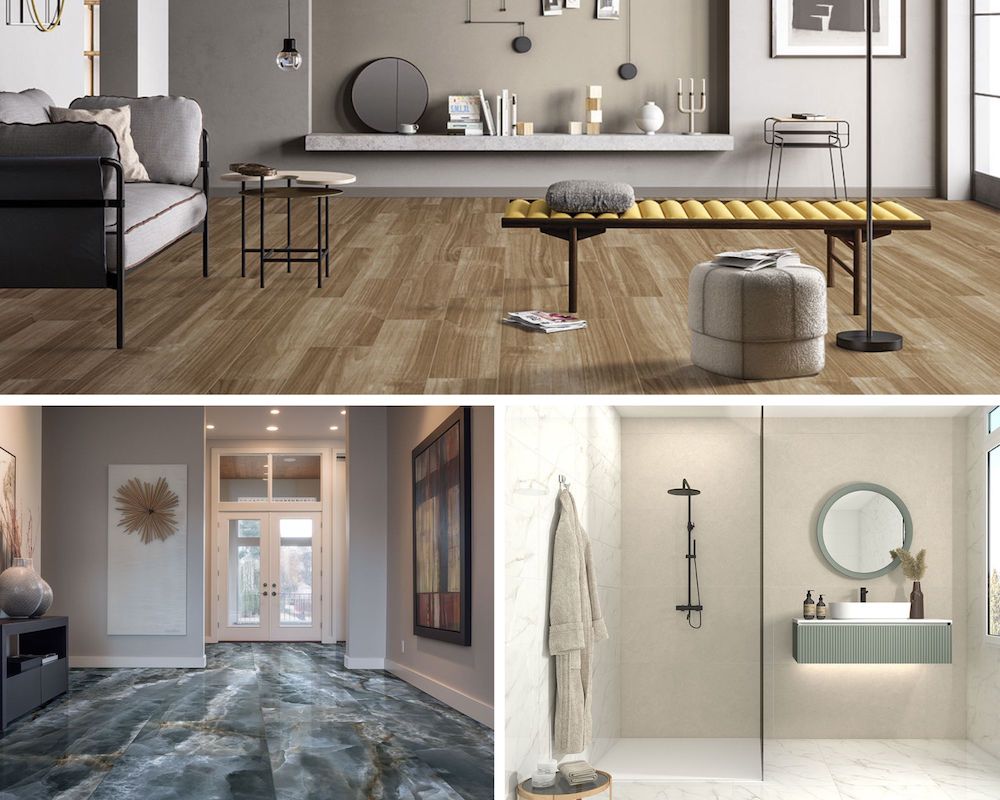
Are you considering using large format tiles in a home or commercial property? In this Tile 101 article, we will cover the benefits, the beauty, and highlight the best practices for successful installation.
Large format tiles come in a wide range of colors and designs, making them a perfect solution for a variety of design aesthetics. Typically defined as tiles larger than 12x12, today’s large format options include popular wood-look porcelain planks in sizes like 6x24 and 6x36, as well as modern, oversized formats such as 24x48, and even 48x48 for a sleek, seamless look. They are durable, and because of their size, fewer are needed per space, meaning fewer grout lines making cleanup and maintenance a breeze. For flooring, accent walls, shower and tub surrounds, countertops, backsplashes, and kitchen islands, large format tiles can help visually expand your space, and create a cohesive feel.
While large format tiles are appealing because they are durable, easy to clean, and come in a wide array of colors and designs, it is important to address installation as these tiles require special handling to insure a professional finish.
 Calacatta Lucca Porcelain Tile
Calacatta Lucca Porcelain Tile
Large Format Tiles Must Be Supported Properly
Obviously, large format tiles are heavier than smaller tiles. However, what many people fail to realize is that even though the overall weight of the floor remains the same, heavier tiles require a stronger substrate. In addition, with smaller tiles installers may be able to disguise floors that are less than level, but with larger format tiles, that becomes a challenge. A high point in the floor can cause the tile to slope, creating a tripping hazard, as well as being visually disruptive. It is recommended that the variation for 10 feet of horizontal and vertical installation not exceed 1/8 of an inch. When installing large format tiles on a vertical surface, it is important to support the tiles as the mortar sets to ensure gravity doesn’t pull them out of place.
Level Floors & Plumb Walls
For proper installation, floors and other horizontal surfaces need to be level and vertical surfaces must be plumb. Height and depth variations will be noticeable. For floors that are not level, consider using a self-leveling underlayment. As mentioned above, it is important to keep the variation less than 1/8 of an inch. For walls that are not plumb, the walls may need adjustment prior to installation.
Planning the Layout
Laying out the tiles prior to installation is important. It helps you to select a pattern that best suits the room. Large format tiles allow for a variety of intriguing patterns, including traditional brick patterns, herringbone, straight joint, chevrons, cobblestone, basket weave, and circular rectangular. For plank-sized tiles, it is important to use a 1/3 offset pattern, as shown in the illustration below, instead of a standard 1/2 offset pattern often used for smaller tiles. This helps to prevent cracking and lippage, as well as creates a more beautiful end result. 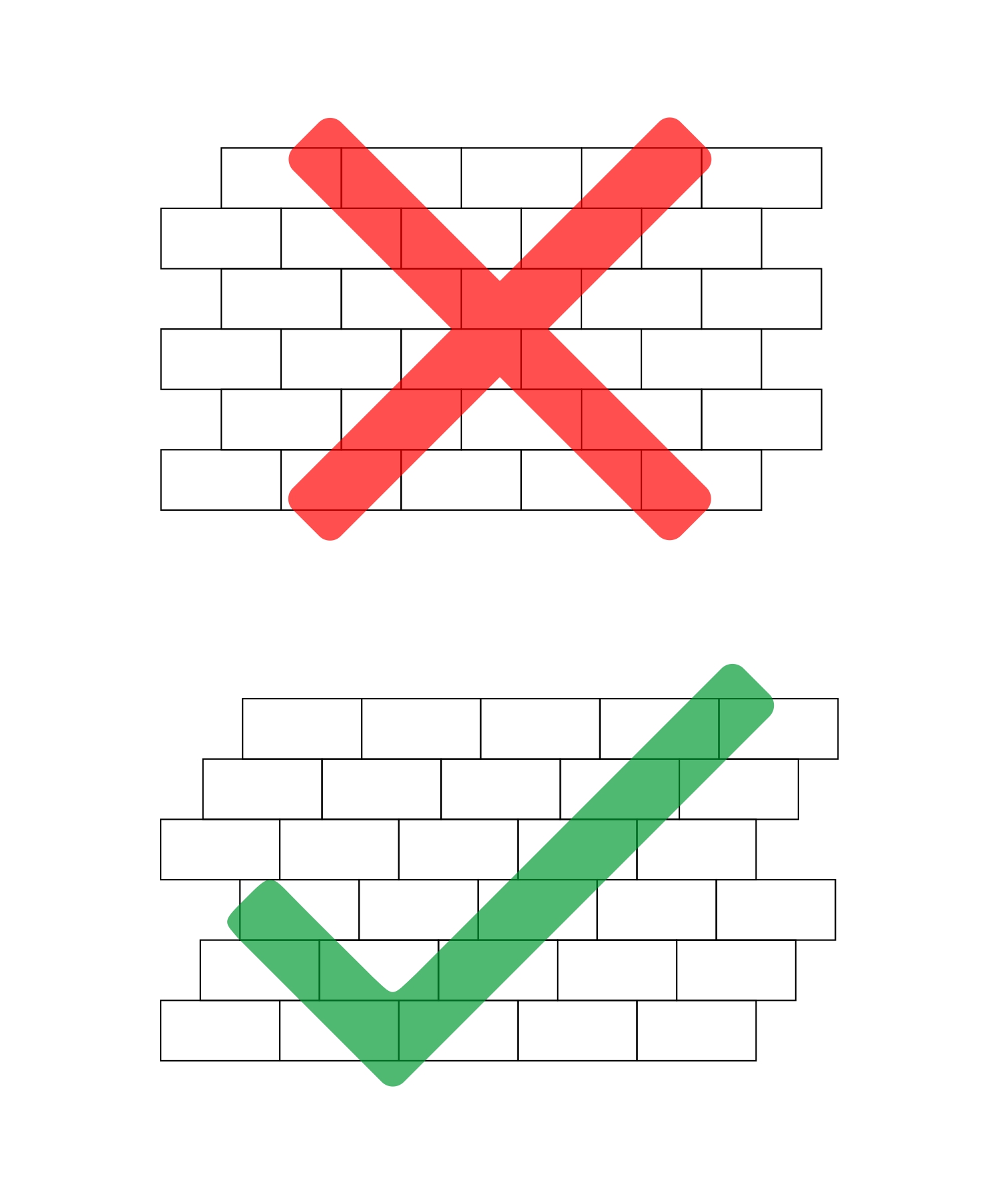
Choosing Grout
As with all tile floors, proper planning is essential, and the color of the grout needs as much consideration as the tiles themselves. When installing large format tiles, like planks or porcelain tile, it is vital to adhere to the recommended grout line widths, recommended patterns, and all installation guidelines. For all of MSI's rectangular tiles, a minimum of a 1/3 or more off set with 1/8 grout joint size is recommended for rectified tiles and a 3/16 grout joint for non rectified. If you want a more cohesive flow to the room, it is recommended to use grout that is as close to the color of the tile, as possible. This creates a more seamless appearance, and helps to visually expand the room, allowing the beauty of the tiles to shine.
For a contemporary look, try a 1/3 staggered offset pattern. This layout creates a graphic, linear effect that naturally draws attention to the floor. To highlight the pattern, pair it with a lighter grout for contrast. For a more seamless appearance, choose a grout that closely matches the tile color, or go just a shade darker to add subtle dimension without disrupting the flow.
If you love the look of reclaimed wood but want something more durable and low-maintenance, wood-look tile in 8x48 planks is a great alternative. These longer planks are ideal for creating a traditional wood-look floor using a 1/3 offset pattern. For added visual interest, consider installing the floor tile in a herringbone or chevron layout. It's a good idea to test out a few pattern options in the space to see which design best complements the room.
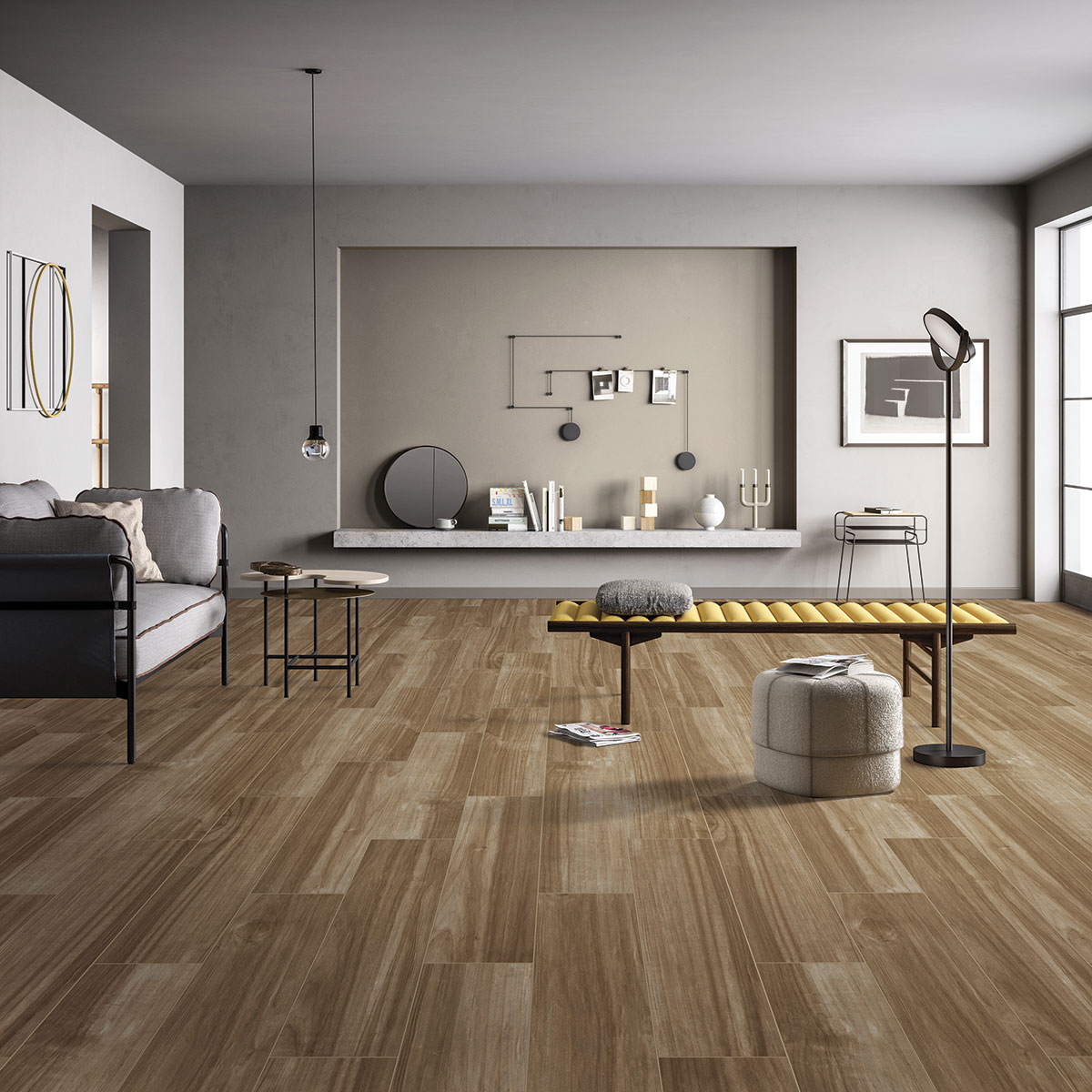 Saddle Havenwood Wood Look Tile
Saddle Havenwood Wood Look Tile
Safeguarding Against Cracking with Proper Mortar
Due to the weight and size of large-format tiles, it is essential to use mortars or thin-set specifically formulated to support these larger tiles. Even durable tiles, such as ceramic tiles, require a thin-set strong enough for this application. This is important for all installations, whether vertical or horizontal. Polymer modified mortars and medium-bed mortars are practical choices as they help tiles adhere to walls better, and shrink less keeping tile from moving and cracking. Medium-bed mortars are often used for flooring to help prevent lippage and slumping into the mortar bed. It is important to note that this type of mortar is more difficult to handle, and it is important not to add additional water as this will adversely affect the mortar’s ability to support the tiles.
As more and more large format tiles come to market, more specially designed mortars are developed to support the weight. Some of the new formulations contain microspheres that help to keep tiles level and plumb. When purchasing tile, discuss the various types of mortars available to ensure a beautiful result that will endure decades of wear. Cracking is also a concern with large format or heavy tiles if they are not installed as recommended. Shrinkage of the mortar and uneven surfaces are often the cause. Crack isolation membranes help to prevent this problem and are installed directly to the substrate.
Installation of large format tiles, in all materials including porcelain tile, ceramic, and even natural stone like travertine or marble tile, may require special handling, but their beauty, durability, and low maintenance make them well worth the additional upfront planning and extra time it takes to install them. Whether you're designing a commercial space or a residential area, these tiles can significantly elevate the aesthetic appeal. Browse through our porcelain collection, which includes our large format tiles, for inspiration on how you can transform floors, backsplashes, showers and tubs, and create stunning accent walls to enhance the beauty of your home.
Have more questions or looking to buy large format tile? Find an MSI authorized dealer near you, chat with us online, or visit an MSI showroom.
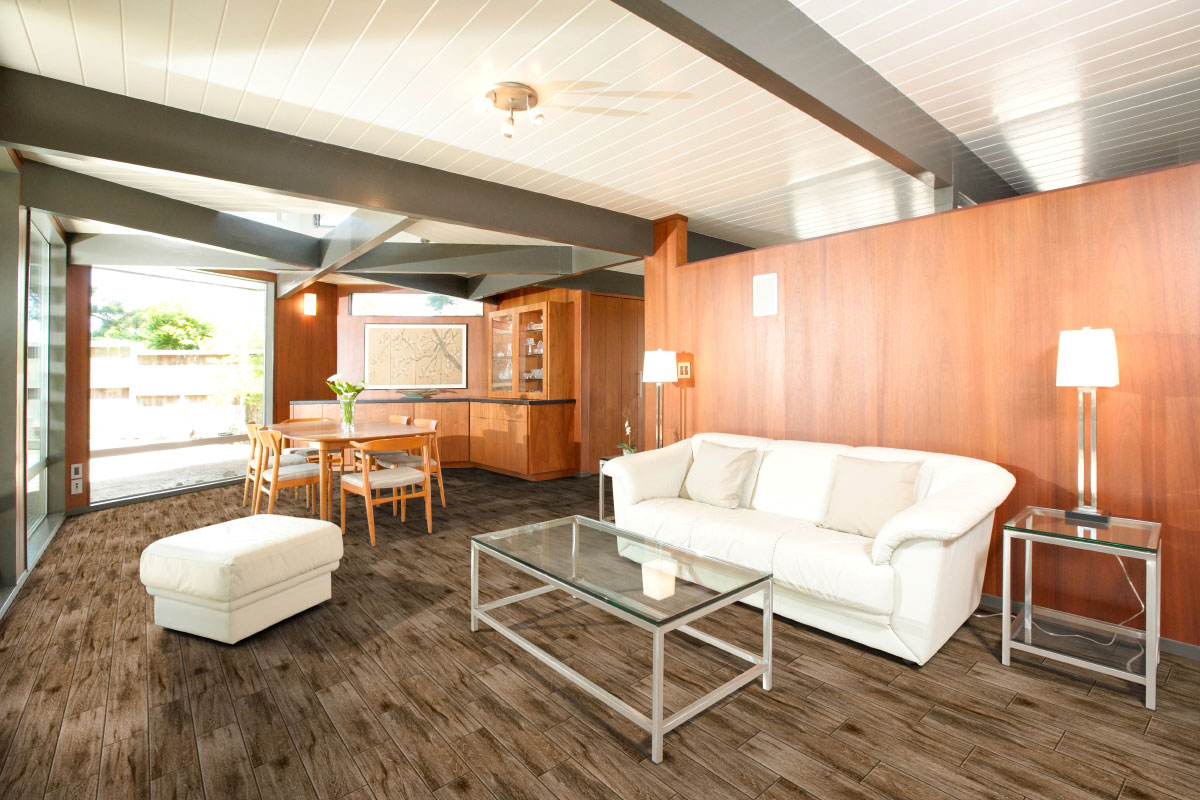 Amber Balboa Wood Look Tile
Amber Balboa Wood Look Tile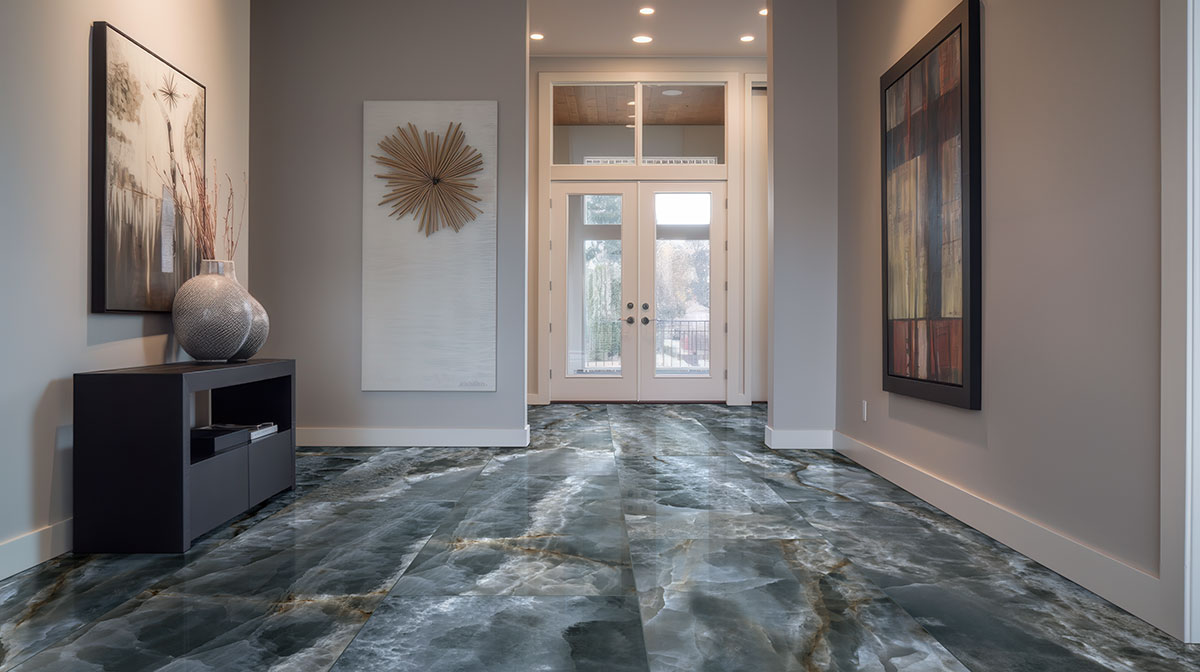 Tourmaline Porcelain Tile
Tourmaline Porcelain Tile